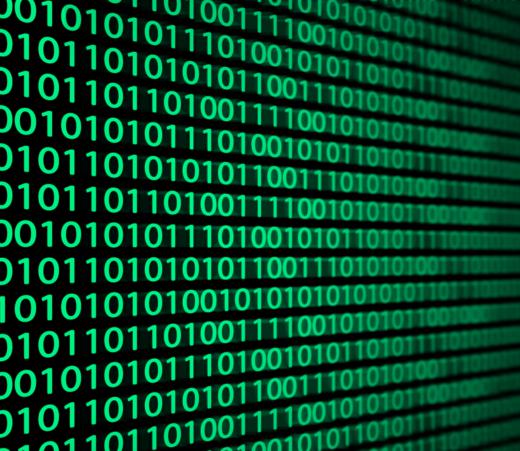What is a Binary Integer?
The binary system is a kind of number system that uses a simplified notation to reduce our modern counting to only the integers one and zero. A binary integer is one of these ones and zeros that make up a binary string, and is a whole number. It is used within what some call a "base-2" system, in contrast to the counting system that the modern world commonly uses, called "base-10" because it uses ten as a specific unit for the construction of larger integers. The base-2 system just uses the one and zero, so one is the "top number" for this system.
The binary system that we use today has its roots in ancient cultures and practices. One of these is the I Ching, a traditional eastern method for divination that uses the two sides of coins or other items for using a binary system to tell fortunes. Other books and resources show uses of binary in various historic cultures, for counting, alternative mathematics, or other fundamental studies of how humans use integers.

Although the binary system has been around for centuries, it has become a staple of a very modern field: computer science. Binary numbers form the basis for a lot of the first computer engineering that gave rise to modern computer languages. Programmers who were trying to boil down computation into simple procedures that a machine could easily perform found that the binary integer was useful in forming simple "on-off" strings that would often be called machine language. The binary integer has been a traditional way to translate word-based computer languages that programmers use into something that is easily readable to a machine.
Just as the binary integer is common for translating computer languages to a compiler or other software tool, binary numbers also became standard for storing data. A binary stream is a viable method for storing almost any kind of data on a computer because of the innate simplicity of the system. Programmers and engineers continue to explore the uses of binary integers for all kinds of high-tech communications and data processing. Besides ones and zeros, a binary system can be shown as a "true/false" dialectic or other item on a software interface. Engineering students and other often learn binary early on in their training, since the range of applications for this system is so broad, and binary integers are so much in use in a variety of different technologies.
AS FEATURED ON:
AS FEATURED ON:











Discussion Comments
@Mammmood - I’ve done some software development, and we have to do some binary conversion algorithms from time to time. It’s not a fun process, but it does have its advantages.
For example, you can use a single binary number to represent different unique flags or values. Let’s say it’s a binary number consisting of 8 bits. Each bit can be mapped to a special value or code.
If that bit is flipped to a one or a zero, then you have different possible code combinations that can be represented. You accomplish this by using one little binary integer and modifying its bits.
@NathanG - When I was in college we learned about binary numbers. They are foundational to computer science; I don’t know what the real roots of the system are. I always thought it was more of a matter of convenience to have the computer use ones and zeroes.
Anyway, the most interesting fact that I learned about using the binary number system is that you can use it to perform basic mathematical operations. You can use a technique called bit shifting.
Basically you take two numbers, each represented by ones and zeroes, and shift their bits to the right or to the left. The net effect is that you have added or multiplied or divided the two numbers, as the case may be.
Of course doing math this way is a little harder, and I don’t know that we are all wired to doing binary math. It’s more of a shortcut than anything else.
I always thought that the binary number system had its roots in electrical engineering, not in the I Ching.
In electrical engineering, you have electric charges which can be positively charged or negatively charged. The positive or minus charges translate into on or off, or one and zero, in the binary system.
I had no idea that there were Eastern I-Ching roots to the binary system, although I don’t doubt it to some extent. If you push back far enough I think that you will find our entire mathematical system goes back to the ancient East, and I don’t doubt that some of our electrical concepts go back that far too.
Post your comments